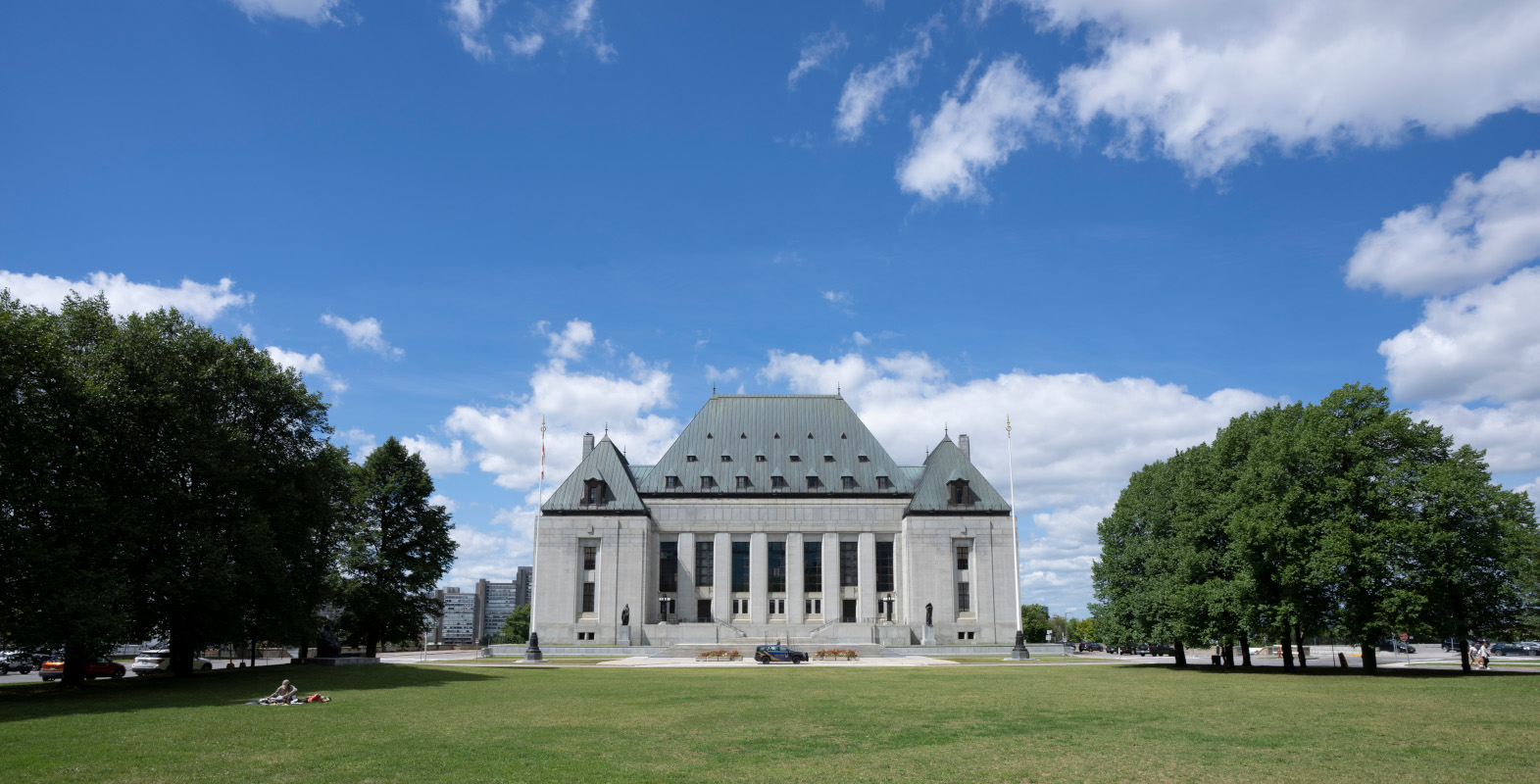Now that a new year is upon us and red-robed Supreme Court justices have returned to their seats in Ottawa, we at The Hub thought it would be a good time to ask lawyers and law professors from across the country which significant and potentially impactful Supreme Court cases they will be keeping an eye on.
Here’s what they’ll be watching for in 2024:
Should ministers’ mandate letters be secret?
Gerard Kennedy, assistant professor, Faculty of Law, University of Alberta (Edmonton, Alberta)
2024 will almost certainly see the release of the Supreme Court’s decision in Attorney General of Ontario v. Information and Privacy Commissioner of Ontario, et al. Heard by the court last spring, the case concerns Premier Doug Ford’s refusal to release the mandate letters he sent to his cabinet ministers in 2018.
Despite often disagreeing on high-profile cases, Justices Andromache Karakatsanis and Malcolm Rowe asked similar questions in the hearing: if first ministers wish the mandate letters to be the beginning of a conversation with their cabinet ministers, in an effort to craft government policies, they must logically remain confidential. Perhaps not coincidentally, Justices Karakatsanis and Rowe both previously led their provinces’ civil services.

There is no question that Ford could choose to make the mandate letters public like Prime Minister Justin Trudeau and former Ontario Premier Kathleen Wynne did. But doing so essentially turns them into press releases. There is nothing wrong with press releases. But, it is another matter whether first ministers should be obliged to release press releases at the expense of starting real discussions with their cabinet.
The case also raises another important issue: should Ontario’s Information and Privacy Commissioner be deferred to in deciding whether mandate letters are subject to cabinet confidentiality? Despite the Attorney General of Ontario conceding the answer to this question is “yes”, several judges at the hearing asked whether this should be the case. Shouldn’t documents subject to such confidentiality have that secrecy maintained whether before a particular bureaucrat or any other actor in the justice system?
Soon enough, the Supreme Court will give us its answers to these questions.
Should governments be able to recover opioid health-care costs from companies?
Andrea MacNevin, Lawyer at Barteaux Labour and Employment Lawyers (Halifax, Nova Scotia)
I’ve selected Sanis Health Inc., et al. v. His Majesty the King in Right of the Province of British Columbia, which will be heard this May. This case is on one hand a fun Canadian constitutional interpretation case for all the nerds at the front of the class. On the other, it has important ramifications for our ailing health-care systems to either recover costs for opioid-related damages more efficiently or in lengthy piecemeal cases.
The Opioid Damages and Health Care Costs Recovery Act (ORA) created a new tort of an opioid-related wrong, providing government the ability to recover health-care costs relating to opioid-related wrongs from the manufacturers and distributors of opioid drugs. The money collected in damages would go back into health care, so it’s not directly restorative for individually affected families but hopefully would slow or curb opioid wrongs committed by corporate actors, which may save or lengthen lives.
There was an active class action lawsuit brought by the province of B.C. against manufacturers and distributors of opioids at the time the ORA came into force. Section 11 of the ORA allows British Columbia to bring an action on behalf of a class consisting of one or more of the governments of Canada and the provinces or territories. The applicants (which includes Shoppers Drug Mart), who are the named defendants in a proposed class proceeding brought under the ORA by the province of B.C., claim that goes beyond the scope of constitutional powers granted to provinces under the Constitution. They say it should be deemed of no force and effect.
The B.C. Supreme Court dismissed the defendant corporations’ application, which was upheld at the B.C. Court of Appeal.
How much should third parties be able to influence your vote?
Bruce Ryder, associate professor at Osgoode Hall Law School (Toronto, Ontario)
At issue in the appeal of Working Families Coalition v. Ontario, to be heard by the Supreme Court, is the constitutionality of the spending limit of $600,000 on third-party political advertising that is applied for the year before the start of Ontario election campaigns. Third parties include groups like unions, special interest groups, and corporations.
When this limit was first enacted in 2017 by the provincial Liberal government it applied only to a six-month pre-writ period. In 2021, the Ford government doubled it to 12 months. Working Families along with several teachers unions successfully challenged the 12-month period as an unreasonable limitation on freedom of expression. The Ford government then decided to preserve the law by adding a notwithstanding clause to legislation for the first time in the province’s history.
After a lower court ruled with the government, Working Families then launched a new challenge, alleging Section 3 of the Charter (the right to vote) had been violated. Voting rights are among the few rights not subject to the notwithstanding clause legislative override. The Ontario Court of Appeal, in a split 2-1 decision, found that extending the pre-writ third-party spending limits to 12 months infringed the informational component of the right to vote, protected by Section 3 of the Charter. They found it undermined the ability of citizens to meaningfully participate in the electoral process.
The Ontario government’s appeal gives the Supreme Court an opportunity to address the scope of the right to be reasonably informed of your electoral choices as part of your right to vote.
At what point do spending restrictions cease to be voting rights-enhancing and become voting rights-restricting? The appeal raises important issues regarding the respective roles of courts and legislatures in determining the rules that shape our electoral democracy. The appeal also gives the court an opportunity to explore the relationship between freedom of expression and the right to vote. This issue is especially important because freedom of expression is subject to the notwithstanding clause, while democratic rights are not.

Who’s got the power?: judicial review of government’s actions
Paul-Erik Veel, partner at Lenczner Slaght LLP (Toronto, Ontario)
Two cases that will be heard by the Supreme Court in 2024, raising seemingly unrelated issues, will decide significant questions about the underlying relationship between our governments and our courts. Auer v. Auer raises the legality of the Federal Child Support Guidelines, which set out rules around the amounts parents must pay in child support.
Meanwhile, TransAlta Generation Partnership v. Alberta (Minister of Municipal Affairs) has to do with the legality of portions of the Alberta Linear Property Assessment Minister’s Guidelines, which involves calculating municipal taxes.
While the specific issue in each case is different—child support and taxes—both cases raise the same underlying issue: how should courts review government regulations?
Meaningful judicial review of government action is truly a cornerstone of the rule of law. While the role of courts in reviewing government action has been hotly debated in this country for decades, those debates were largely settled by the Supreme Court’s 2019 decision in Canada (Minister of Citizenship and Immigration) v. Vavilov. Interestingly, that case involved the Canadian Registrar of Citizenship’s decision to cancel the citizenship of a man named Alexander Vavilov because his parents were covert Russian agents. That landmark decision set out a framework for judicial review that was relatively clear, consistent, and defensible.
What it did not decide, however, is how courts should review the legality of regulations declared by the government. That is, how should courts evaluate whether regulations established by the government are properly authorized under their enabling statute?
This is a critical issue to the scope and legitimacy of the government’s authority since much of the modern administrative state is defined not by legislation but by regulations.
In a 2013 decision in Katz Group Canada Inc v. Ontario (Health and Long‑Term Care), involving Ontario banning the sale of private label drugs in pharmacies through regulations, the Supreme Court established a very deferential standard. It stated government regulations should only be held ultra vires (beyond the authority of the courts) when they are shown to be “inconsistent with the objective of the enabling statute”. This standard has made the vires of regulations virtually impossible to challenge.
So, both Auer and TransAlta squarely raise the question as to whether the extremely deferential standard in Katz continues to apply to the assessment of regulations, or whether that standard must be revisited in light of Vavilov.
These cases will be key ones to watch in 2024, as they determine fundamental questions about what the rule of law actually means, and how far courts must defer to government legislation.
Recommended for You

‘An approach that lacks principles’: The Roundtable on Canada’s confusing China reset and the lack of scrutiny on Carney

What’s at stake in Alberta’s under-the-radar municipal elections

It’s time to ring the economic alarms, Canada

‘The government is floundering’: Hub Politics on Carney’s bail reform pivot and Canada’s auto manufacturing future



